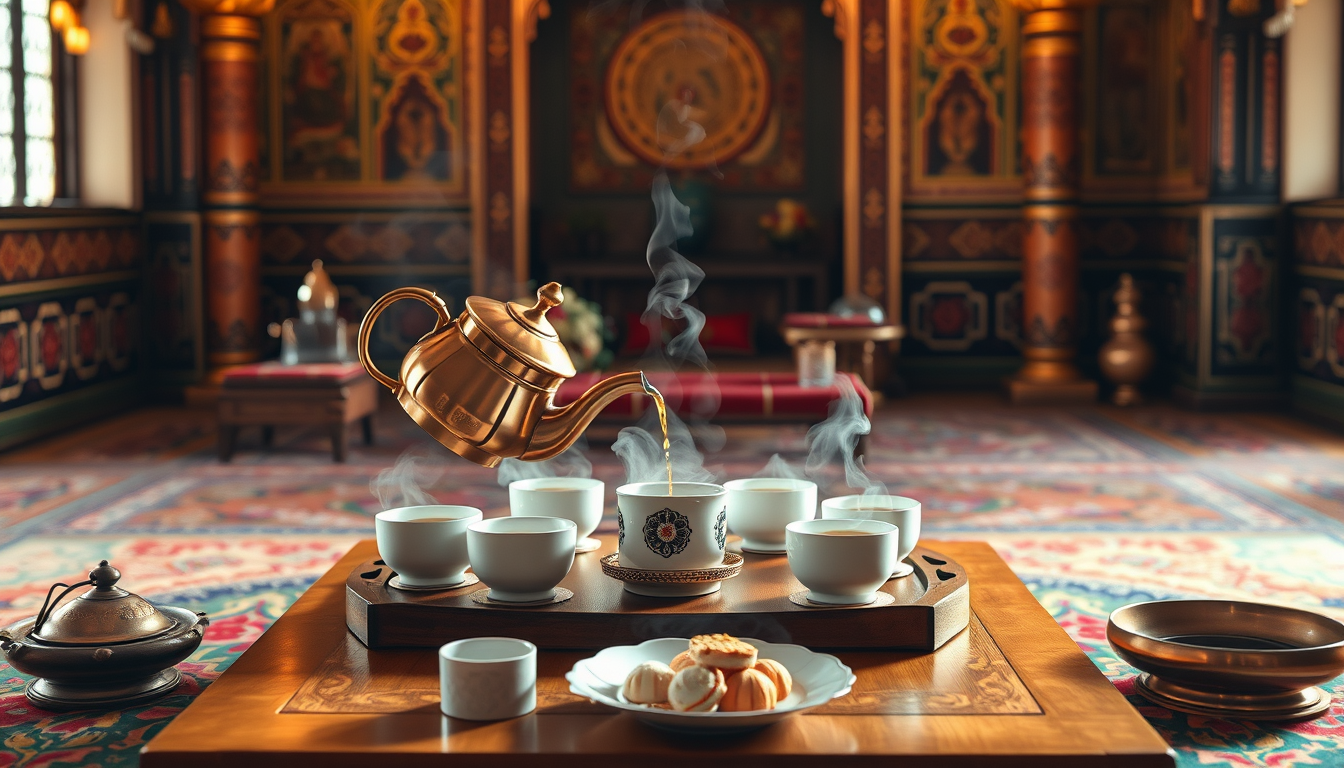Introduction
Tea, a beverage that has captivated the world with its aroma, flavor, and health benefits, has a rich history and cultural significance in India. This article delves into the fascinating world of tea in India, exploring its origins, the various types of tea produced, the tea culture, and its impact on the economy and society.
The History of Tea in India
Ancient Origins
The history of tea in India dates back to ancient times. The earliest evidence of tea consumption in India can be traced back to the Vedic period (around 1500 BCE), where tea leaves were mentioned in the ancient texts. However, the systematic cultivation and consumption of tea as a beverage began during the Tang Dynasty in China (618-907 CE), from where it spread to India.
British Influence
The British East India Company played a significant role in popularizing tea in India. In the mid-18th century, the company introduced tea cultivation in the Indian subcontinent, initially in the Darjeeling region. The British also established tea gardens in Assam, which became one of the world’s largest tea-producing regions.
Independence and Beyond
After India gained independence in 1947, tea production and consumption continued to grow. Today, India is the second-largest producer of tea in the world, after China. The tea industry in India is a significant contributor to the country’s economy, providing employment to millions of people.
Types of Tea Produced in India
Assam Tea
Assam tea is one of the most popular types of tea produced in India. It is known for its robust flavor and high caffeine content. The tea is primarily grown in the Assam region, which has a tropical climate and fertile soil. Assam tea is often used in blends and is a popular choice for breakfast tea.
Darjeeling Tea
Darjeeling tea is renowned for its delicate flavor and aroma. It is grown in the Darjeeling district of West Bengal, at high altitudes. The tea is often referred to as the “champagne of teas” due to its unique taste and quality. Darjeeling tea is typically lighter in color and has a floral and fruity aroma.
Nilgiri Tea
Nilgiri tea is another popular type of tea produced in India. It is grown in the Nilgiri Hills of Tamil Nadu. Nilgiri tea is known for its bright color and strong flavor. It is often used in blends and is a popular choice for iced tea.
Other Types of Tea
Apart from Assam, Darjeeling, and Nilgiri, India also produces other types of tea, such as:
– Kashmiri Tea: Grown in the Kashmir Valley, this tea is known for its light color and delicate flavor.
– Kumaon Tea: Produced in the Kumaon region of Uttarakhand, this tea is known for its strong flavor and high caffeine content.
– Munnar Tea: Grown in the Munnar region of Kerala, this tea is known for its bright color and strong flavor.
Tea Culture in India
Tea Time
Tea time is an integral part of Indian culture. It is a social event where people gather to enjoy a cup of tea, often accompanied by snacks such as biscuits, cakes, or samosas. Tea time is a time for relaxation and socializing, and it is an important part of the daily routine for many Indians.
Tea Ceremonies
In India, tea ceremonies are often held during special occasions and festivals. These ceremonies involve the preparation and serving of tea with a sense of ritual and tradition. The tea is often served in traditional cups and accompanied by sweets or snacks.
Tea in Literature and Arts
Tea has also made its way into Indian literature and arts. Many Indian writers and poets have written about tea, its aroma, and its significance in Indian culture. Tea is also a popular subject in Indian art, with many artists depicting tea gardens, tea ceremonies, and tea cups in their works.
The Economic Impact of Tea in India
Employment
The tea industry in India is a significant employer. It provides employment to millions of people, from tea pluckers to tea garden managers. The industry also supports the livelihoods of many small-scale farmers who grow tea.
Export
India is a major exporter of tea. The country exports a significant portion of its tea production to countries around the world. The tea industry contributes significantly to India’s foreign exchange earnings.
Tourism
The tea gardens in India are also a major tourist attraction. Many tourists visit the tea gardens in places like Darjeeling, Assam, and Munnar to experience the beauty of the tea plantations and learn about the tea-making process.
The Health Benefits of Tea
Tea is not just a beverage; it is also a source of numerous health benefits. The antioxidants in tea can help prevent cell damage, reduce the risk of chronic diseases, and boost the immune system. Tea also contains caffeine, which can improve alertness and concentration. Additionally, tea is low in calories and can be a healthy alternative to sugary drinks.
Conclusion
Tea and India have a long and rich history together. From its ancient origins to its role in the British colonial period and its current status as a major tea-producing country, tea has played a significant role in Indian culture, economy, and society. Whether it is enjoyed as a social beverage, a part of a cultural ceremony, or a source of health benefits, tea continues to be an integral part of Indian life. As the tea industry in India continues to grow and evolve, it is sure to remain a vital component of the country’s heritage and identity.
References
– “The History of Tea in India.” Tea Board of India. Retrieved from [https://www.teaboard.gov.in](https://www.teaboard.gov.in)
– “Tea Culture in India.” Indian Tea Association. Retrieved from [https://www.indianteaassociation.com](https://www.indianteaassociation.com)
– “The Economic Impact of Tea in India.” Ministry of Commerce and Industry, Government of India. Retrieved from [https://commerce.gov.in](https://commerce.gov.in)
– “Health Benefits of Tea.” Harvard Health Publishing. Retrieved from [https://www.health.harvard.edu](https://www.health.harvard.edu)
